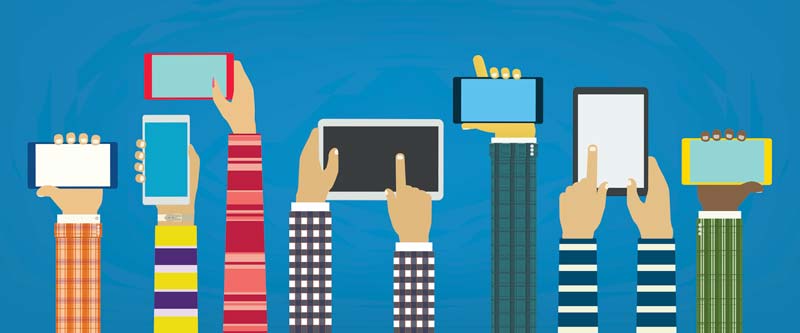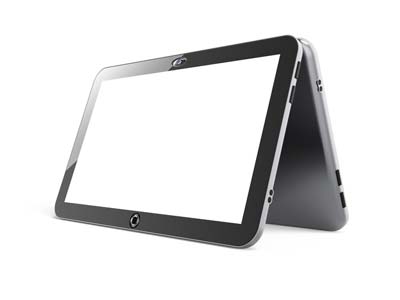The 2 in 1 tablet: the future of workplace ergonomics?
How portable IT solutions aid mobility in the workplace
With increases in mobile and flexible working, more companies are looking at portable IT solutions. However, laptops, tablets, and other portable devices increase postural demands on users: repetitive use can cause a range of injuries including chronic neck, back and upper limb pain.
Recently, a new type of smart device has entered the workplace: the hybrid, or 2 in 1 tablet. Ergonomics and Human Factors Consultant, Laura Milnes, explores how these devices could answer some workplace health and ergonomics challenges.
2 in 1 tablets: a versatile asset
Based on trials of several 2 in 1 devices, we’ve found their versatility can prove an asset in increasing mobility in the workplace – without compromising on good workstation ergonomics. Like a regular laptop, a 2 in 1 tablet can be set up at a desk using a docking station or port replicator with a peripheral keyboard and mouse, and a separate monitor. But the main advantage is that users can pick up the device and walk away from their workstations, without major interruption to their work activities.
 Taking a break
Taking a break
Imagine you are creating a Microsoft Word document, sitting at your desk with the convenience of a comfortable keyboard and safe workstation arrangement. After 20 minutes of focused writing, you break the production task to review what you’ve already written.
If you’re using a laptop, you will likely carry out the review while sitting at your desk, probably using a combination of mouse and keyboard inputs, and ideally using that change of activity to take a short posture break. Most users spend at least an hour sat at their desk before they break away from their workstation, especially when they are in the middle of a task requiring focused attention.
Now with a 2 in 1 tablet…
With a 2 in 1 tablet device, you have the flexibility to pick up the tablet and stylus pen, walk away from your desk, and perform the reviewing task somewhere else. The potential benefits go beyond the additional (and arguably more natural) technological features brought by the touch screen and stylus pen.
The technology is non-intrusive and the limited number of ports available keeps unplugging to a minimum. The action of separating the tablet from its keyboard to walk away from the desk feels much like picking up a notepad and pen to walk into a meeting, or grabbing a mobile phone to go and make a call.
The multiple means of interaction with the 2 in 1 device (touchscreen and stylus pen; keyboard; trackpad; mouse) not only increase its usability. If used according to ergonomics best practice, they have the potential to reduce the risk of repetitive strain injuries by introducing a greater variety of movements and postures of the fingers, wrists and arms.
 Sit less
Sit less
A 2 in 1 tablet can also have a significant impact on reducing the amount of time an employee spends sitting at their desk. This reduces the risk of serious health issues linked with prolonged sitting at work, and aligns with health promotion programs such as ‘Get Britain Standing’.
Musculoskeletal Risks
Just like the laptops and tablets they try to emulate, the introduction of the 2 in 1 tablet must come with a word of caution. Employers thinking of providing their employees with these devices must be aware of the musculoskeletal risks inherent to their prolonged use – and have measures in place to mitigate them.
The most obvious measures to counter musculoskeletal risks include providing employees with the necessary equipment to set up their workstation in line with the DSE Regulations. It’s also vital to educate them so that they can make the most of their device, injury-free.
Workplace of the future
Office design is a crucial component in improving workplace health and wellbeing. Portable IT solutions like the 2 in 1 tablet are well worth considering when designing your workplace of the future.
If your organisation is seeking insights on workplace design, our ergonomics and human factors experts can help.


 Taking a break
Taking a break Sit less
Sit less